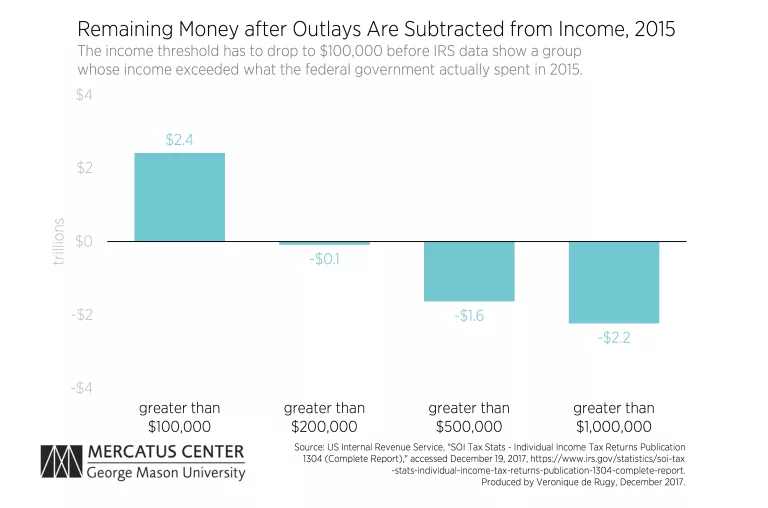- | Government Spending Government Spending
- | Data Visualizations Data Visualizations
- |
How Much Federal Spending Can the Rich Buy Us?
If all Americans earning more than $200,000 per year gave all of their income to the IRS, it would still not be enough to pay for federal government spending for one year.
When talking about how to reduce the US national debt, a common prescription is that we should “tax the rich.” It is often hard to tell what people mean by “rich,” but let’s assume that they are referring to income earners in the top 1 percent. How much of those earners’ collective annual income would pay for a year of government spending, and what share of their collective annual income would bring the deficit down to zero?
According to the IRS, to be in the top 1 percent in 2015, an individual had to be making more than $480,930. There were 1,412,046 individuals fitting that description in the United States during that year. Collectively they earned $2 trillion.
That same year, the government spent $3.7 trillion, with a $439 billion deficit. If Congress were to place the responsibility of paying the deficit squarely on the top 1 percent, it would have to take nearly 30 percent of what those earners kept after they already paid their federal income taxes. This would raise the total effective tax rate on this group from 27 percent to 52 percent, and it would still not pay for any new spending.

In 2015, the sum of all incomes over $1,000,000 fell short of total federal outlays by more than $2 trillion. As this threshold is lowered, the sum of incomes for all the people above that threshold gets closer to paying for federal outlays. However, even if the federal government had collected all income from everyone earning more than $200,000 in 2015, it would still have been short of what it spent by more than $88 billion. In fact, the threshold has to drop to $100,000 before we see a group whose income exceeded what the federal government actually spent in 2015.


The money required to pay for the federal government’s spending doesn’t exist in the hands of what most might consider “the rich.” In order to support large quantities of federal spending, the middle class would be required to pay more as well.

